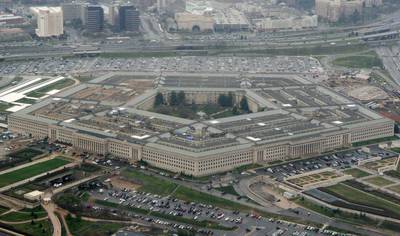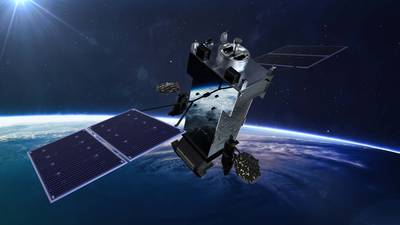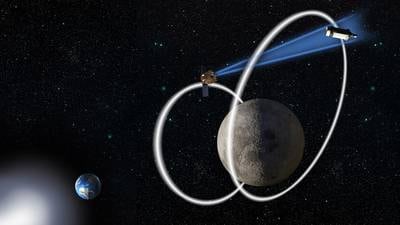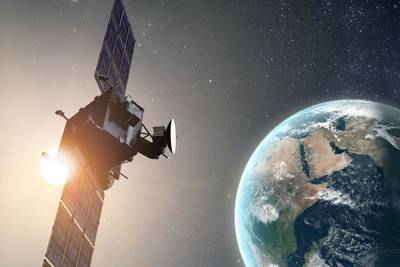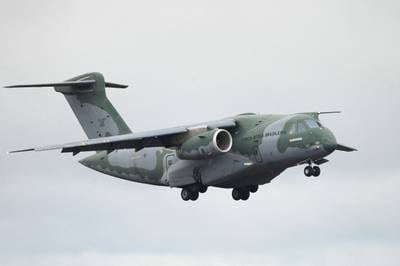LONDON – Britain laid out its military space development priorities Feb. 1 as the Ministry of Defence published its long-awaited strategy for the sector.
The bulk of the £6.4 billion ($8.7 billion) set aside by the MoD for space spending over the next 10 years has long been earmarked for the Skynet 6 satellite communications program, but the study did itemize some of the other capabilities the British were pursing, several of them with an eye to an increasingly aggressive space threat posed by Russia and China.
Over the next decade around £1.4 billion ($1.9 billion) is being earmarked for development of non-Skynet capabilities, mainly in space-based intelligence, surveillance and reconnaissance capabilities.
The strategy document has been welcomed by Britain’s thriving space industry, but executives here say the £1.4 billion spending plan confirmed by the MoD is not sufficient if the government wants to maintain its position as a top-tier player in the sector.
“The defense space strategy is an enormous step towards enhancing UK military operations and building the resilient capabilities needed to operate in highly contested and congested environments,” said Viasat UK boss John Reeves.
The company’s US parent is currently trying to acquire leading British satellite operator Inmarsat in a deal valued at £5.4 billion, or $7.3 billion.
Privately, other industry executives say the strategy’s big themes, like international collaboration and generating national prosperity are on the right track, but the UK needs to find more money if it wants to retain its leading position in the global space sector.
“The key point is they are saying the right things about issues like international collaboration and more integration with the commercial sector, but when you take that £1.4 billion sum and divide it over 10 years it’s not going to sustain capabilities here without a lot of industry support and very careful investment,” said an industry executive who asked not to be identified.
In a speech launching the strategy at Kings College here, Jeremy Quin, the British defense-procurement minister, suggested £1.4 billion may not be the only money on the table.
“Our ambitions don’t end there and are not capped at £1.4 billion,” he said. “So today I am delighted to announce we’re going to invest a further £127 million over the next four years in [a program known as] Minerva,” Quin announced.
“Minerva is about the best means to deliver the digital backbone upon which our space enterprise will depend. It is focussed on the processing power, the radio frequencies, the imaging capabilities, and the data streams to deliver space-based intelligence,” said Quin.
Together, Minerva and a program called ISTARI will form the building blocks of a defense space ISR capability. Collectively, the programs are intended to help teach the British a lesson about how to spirally develop capabilities in an agile manner.
Emphasizing Britain’s collaboration objective Quin also referenced a technology project being undertaken by an international team of suppliers. “I am delighted to announce another really exciting innovation. Our Defence Science and Technology Laboratory is manufacturing a tiny shoe-box-sized satellite – otherwise known as Prometheus 2,” he said.
Manufactured in the UK, Prometheus is operated by the company In-Space Missions, with ground station support from the lab’s international partners and Airbus Defence & Space UK.
Prometheus’s payload will include a hyperspectral imager from Cosine Measurement Systems, global-positioning receivers from the University of New South Wales, Australia, a wide field-of-view imager from Canadensys, of Canada, and multiple software-defined radios from Airbus UK.
The procurement minister laid out some of the other investments the British are pursuing but made no reference regarding what the British planned to do about replacing the position, navigation and timing capability lost when the European Union blocked London from obtaining military-grade data from their Galileo global navigation satellite system in a spat over Brexit.
Quin added that “£970 million will go into our new ISTARI program. This puts in place the foundations of a next-generation constellation of ISR in Low Earth Orbit. They will be fitted with a variety of sensors which can ‘see’ across multiple aspects of the spectrum – allowing for 24/7 observation capabilities whatever the weather.”
Additionally, £61 million are slated for the Titania program, which will experiment with optical laser communication technology. The technology promises to transfer data in, to and from space at an equivalent capacity to high-speed broadband.
The space domain-awareness sector is in line for £85 million, including a boost for the Deep Space Advanced Radar Capability started in collaboration with the United States and Australia. A further £135 million will go towards space command-and-control capabilities, and £145 million are slated for space control initiatives, Quin said.
Andrew Chuter is the United Kingdom correspondent for Defense News.

